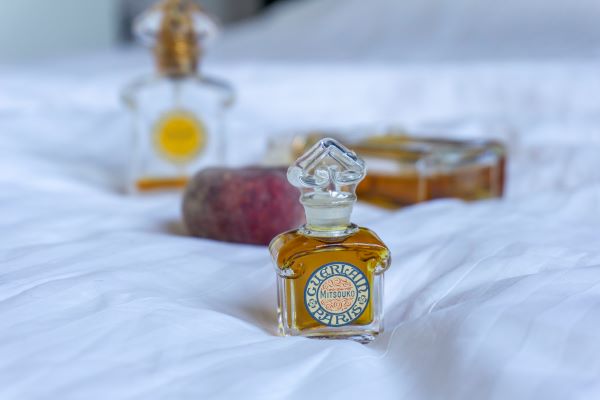How to Smell Peaches in Guerlain Mitsouko
When I wrote my article about lactones, I explained that Guerlain Mitsouko was one of the first perfumes to use these compounds redolent of peach skin and cream. Many of you then commented that you found it difficult to detect lactones in Mitsouko. This difficulty is not surprising, since the peach skin note in Mitsouko is not intended to be a dominant one. Instead, it offsets the darkness of moss and woods and harmonizes the warm drydown and the floral heart of the perfume.

In general, none of the Guerlain classics are easy to take apart note by note; this is not like modern niche perfumery where you can tell the percentage of Iso E Super at first sniff. The idea of the grand parfums like Mitsouko wasn’t to recreate a smell of peach or moss, but to evoke a mood, to tell a story and to tease the senses. I like the streamlined modern perfumes for other reasons, but if I want baroque complexity, Guerlain classics are my first port of call.
Like other perfumers, I spent months of my training recreating important classics without recourse to gas chromatography–with only my nose to guide me. So here I propose a technique that will help you identify the peach note in Mitsouko.














Joi in Giorgio Armani Mania : Long Lost Favorite Perfume: Yes!! January 25, 2024 at 2:54am